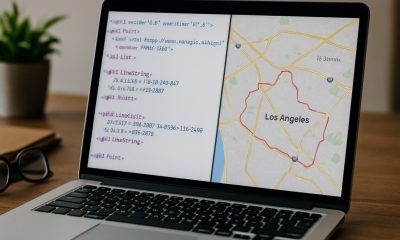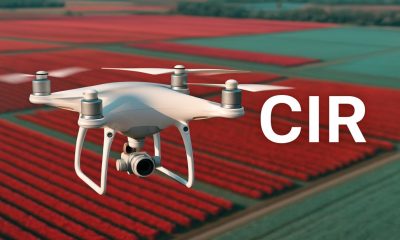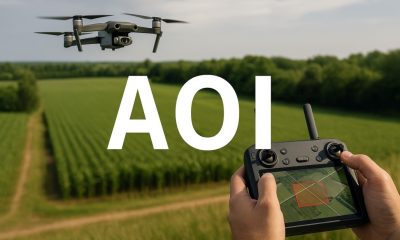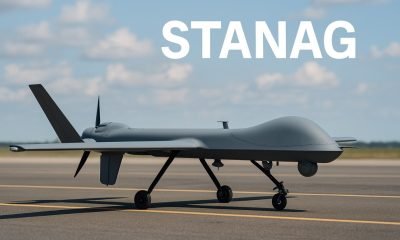- Acronym Guide
- AAM
- ABS
- AC
- ACAS
- ADS-B
- AFAC
- AGL
- AI
- AIM
- ALS
- AM
- AMA
- ANSP
- AOI
- APPI
- AUV
- AUVSI
- ARPAS-UK
- ASTM
- ATC
- BVLOS
- CAA
- CAAC
- CAB
- CASA
- CATT
- CBO
- CBR
- CBRN
- CDMA
- CDR
- CFR
- CIR
- COA
- COMINT
- CORS
- COTP
- COTR
- CPTED
- CV
- C2
- DAA
- DEM
- DFI
- DFS
- DGCA
- DHS
- DOD
- DPA
- DPEs
- DRG
- DRO
- DSM
- DSMX
- DSP
- DSSS
- DTM
- EASA
- EFT
- EO
- EOD
- EO/IR
- ELINT
- EMI
- ESC
- EVLOS
- eVTOLs
- FAA
- FCC
- FCS
- FHSS
- FICCI
- FLIR
- FOB
- FOV
- FPS
- FPV
- GBDAA
- GCP
- GCS
- GDPR
- GML
- GNSS
- GPS
- GSD
- GVC
- HDR
- HOGE
- IACRA
- ICAO
- ICS
- IMU
- INS
- IR
- ISA
- ISR
- ITU
- JARUS
- LAAMS
- LAANC
- LAATM
- LAI
- LBA
- LIDAR
- LOS
- LSALT
- MAC
- MAVLink
- MLIT
- MMS
- MSL
- MTOM
- NDAA
- NCSL
- NFZ
- NIST
- NMEA
- NOTAM
- NPA
- NPRM
- NTIA
- OBIA
- OEM
- OFDM
- OOP
- PASM
- PAV
- PCV
- PdM
- PEC
- PIC
- PID
- PIPL
- PLD
- PM
- PN
- PPK
- PPS
- PSM
- PWM
- UAM
- UAOP
- UAS
- UASTM
- UAV
- UCAVs
- UHD
- UHF
- USV
- UTM
- RAIM
- RCC
- RCS
- RFI
- ReOC
- RePL
- RMS
- ROI
- RPAS
- RPC
- RTH
- RTK
- SaR
- SAR
- SARP
- SBAS
- S.Bus
- SBIR
- SEDENA
- SfM
- SFOC
- SIGINT
- SLAM
- SMS
- SORA
- STANAG
- STTR
- sUAS
- TCAS
- TCCA
- TFR
- TIN
- TOF
- TP
- TPS
- TSA
- VHF
- VLOS
- VTOL
Drone Acronyms
What is CBR (Critical Battery Return) & How Does it Work?
By
Jacob StonerTable Of Contents

Definition
CBR, or Critical Battery Return, is a drone safety protocol that automatically triggers a Return-to-Home (RTH) function when the drone’s battery level drops to a predefined critical threshold. The system calculates remaining battery life and distance from the takeoff point, ensuring the drone has enough power to safely return before complete depletion.
Usage
CBR is used in both consumer and enterprise drones to prevent crashes or loss due to battery failure. When activated, the drone immediately begins returning to its home location, often at a pre-programmed altitude, minimizing risk to the aircraft and surroundings. This feature is especially critical during long-range missions or when operating in areas with limited visibility or GPS signal.
Relevance to the Industry
Critical Battery Return is a vital component of drone flight safety, helping operators avoid costly equipment loss and comply with aviation guidelines. In commercial applications—such as surveying, inspection, or delivery—CBR ensures mission integrity while protecting the drone from power-related incidents. It also provides peace of mind for recreational pilots, allowing for safer operation without constant battery monitoring.
How Does Critical Battery Return (CBR) Work?
Critical Battery Return (CBR) is a safety mechanism built into many modern drones to ensure they have enough power to return to their launch point before the battery is fully depleted. The system uses real-time calculations and preconfigured thresholds to protect the drone from power loss during flight. Here’s how it works:
Battery Monitoring in Real Time
During flight, the drone constantly measures its remaining battery percentage, voltage levels, and discharge rates. It also tracks flight distance, altitude, wind resistance, and speed to estimate the time and power needed to return safely to the home point.Dynamic Power Calculation
The onboard flight controller uses these metrics to calculate whether the drone has enough remaining power to return to its takeoff location. This calculation updates continuously to account for changing environmental conditions such as wind or elevation.Threshold Triggering
When the system detects that the battery level has reached the critical threshold—meaning just enough charge remains for a safe return—it automatically activates the Return-to-Home (RTH) function. This threshold is usually set by the manufacturer or can be configured by the user.Return-to-Home Execution
Once triggered, the drone:Ascends to a pre-set safe altitude (if necessary)
Rotates to face the takeoff point
Navigates back using GPS or visual positioning
Lands automatically at or near the original launch site
Failsafe Adjustments
If, during the return, additional battery drain or environmental factors (like headwinds) threaten a safe landing, some advanced drones may:Reduce speed to conserve energy
Issue a landing warning
Initiate an emergency landing in a safe area if return is not possible
CBR is crucial for automated and beyond visual line-of-sight (BVLOS) operations, where manual intervention may be delayed or impossible. It serves as a digital failsafe, allowing operators to focus more on the mission and less on constant battery checks.
Example in Use
“Midway through the inspection flight, the drone’s Critical Battery Return (CBR) system activated, safely guiding it back before battery depletion.”
Frequently Asked Questions about CBR (Critical Battery Return)
How does Critical Battery Return work?
Answer:
The drone constantly monitors its battery level and calculates the power required to return to the takeoff point.
Once the battery reaches a threshold that only allows for a safe return (usually based on distance, altitude, and wind), the CBR system initiates an automated Return-to-Home (RTH).
The drone climbs to a safe altitude (if configured), turns around, and navigates back to its home point, landing automatically if needed.
Can I disable or customize the CBR settings?
Answer:
Most drones allow limited customization of return-to-home altitude and critical battery levels through their companion apps or ground control stations.
However, disabling CBR is generally not recommended, as it’s a key safety feature designed to prevent crashes or loss.
What happens if the drone is too far to make it back?
Answer:
In some systems, the drone may hover or attempt to land safely at its current location if it calculates it cannot return safely.
Newer drones with advanced AI may look for safe emergency landing zones before battery depletion.
For examples of these acronyms visit our Industries page.
As the CEO of Flyeye.io, Jacob Stoner spearheads the company's operations with his extensive expertise in the drone industry. He is a licensed commercial drone operator in Canada, where he frequently conducts drone inspections. Jacob is a highly respected figure within his local drone community, where he indulges his passion for videography during his leisure time. Above all, Jacob's keen interest lies in the potential societal impact of drone technology advancements.











